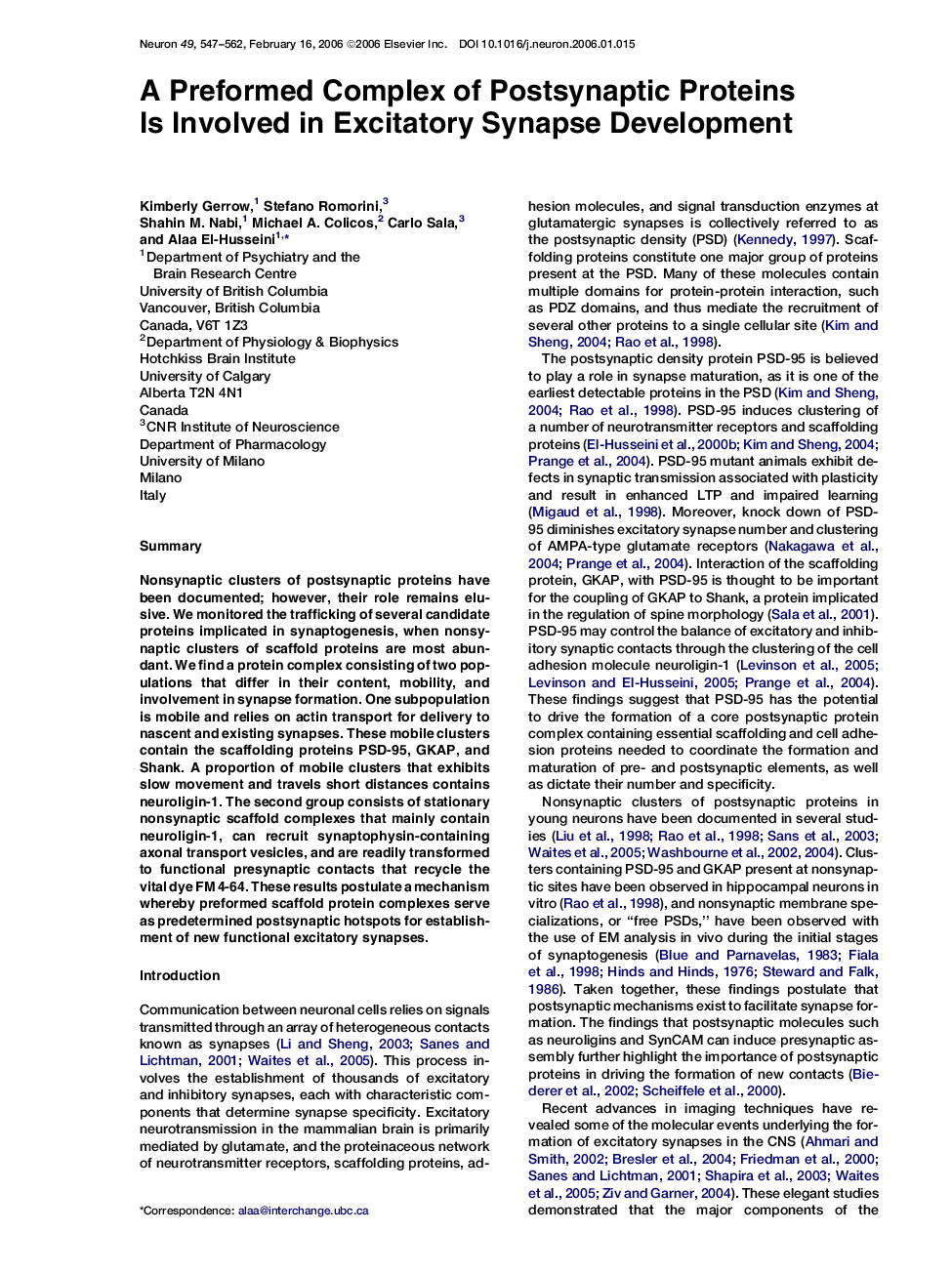| Article ID | Journal | Published Year | Pages | File Type |
|---|---|---|---|---|
| 4323351 | Neuron | 2006 | 16 Pages |
SummaryNonsynaptic clusters of postsynaptic proteins have been documented; however, their role remains elusive. We monitored the trafficking of several candidate proteins implicated in synaptogenesis, when nonsynaptic clusters of scaffold proteins are most abundant. We find a protein complex consisting of two populations that differ in their content, mobility, and involvement in synapse formation. One subpopulation is mobile and relies on actin transport for delivery to nascent and existing synapses. These mobile clusters contain the scaffolding proteins PSD-95, GKAP, and Shank. A proportion of mobile clusters that exhibits slow movement and travels short distances contains neuroligin-1. The second group consists of stationary nonsynaptic scaffold complexes that mainly contain neuroligin-1, can recruit synaptophysin-containing axonal transport vesicles, and are readily transformed to functional presynaptic contacts that recycle the vital dye FM 4-64. These results postulate a mechanism whereby preformed scaffold protein complexes serve as predetermined postsynaptic hotspots for establishment of new functional excitatory synapses.
